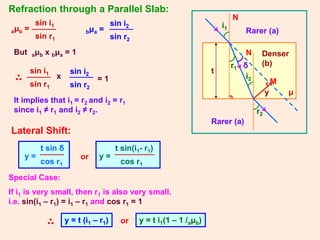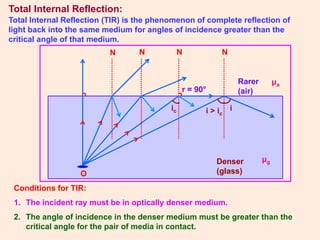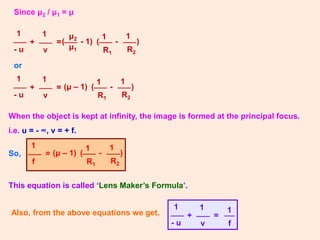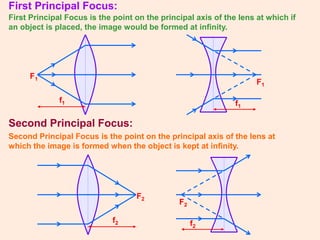This document provides an overview of key concepts in ray optics, including:
1. Refraction is the change in direction of light when passing from one medium to another. Snell's law describes the relationship between angles of incidence and refraction.
2. Total internal reflection occurs when light travels from an optically dense to a rare medium at an angle greater than the critical angle.
3. Spherical lenses use the lens maker's formula and thin lens equation to determine image location based on the object position and lens parameters.
4. Linear magnification is the ratio of image to object size, while power is the reciprocal of focal length and determines a lens's ability to bend light.





![Apparent Depth of a Liquid:
Rarer (a)
Denser (b)
O
O’
N
μb
hr
ha
i
r
r
i
sin i
bμa =
sin r
sin r
aμb =
sin i
or
hr
aμb =
ha
=
Real depth
Apparent depth
Apparent Depth of a Number of
Immiscible Liquids:
ha = ∑ hi / μi
i = 1
n
Apparent Shift:
Apparent shift = hr - ha = hr – (hr / μ)
= hr [ 1 - 1/μ]
TIPS:
1. If the observer is in rarer medium and the object is in denser medium then
ha < hr. (To a bird, the fish appears to be nearer than actual depth.)
2. If the observer is in denser medium and the object is in rarer medium then
ha > hr. (To a fish, the bird appears to be farther than actual height.)
μa](https://image.slidesharecdn.com/1rayoptics1-220724204152-463fae00/85/1_ray_optics_1-ppt-6-320.jpg)












